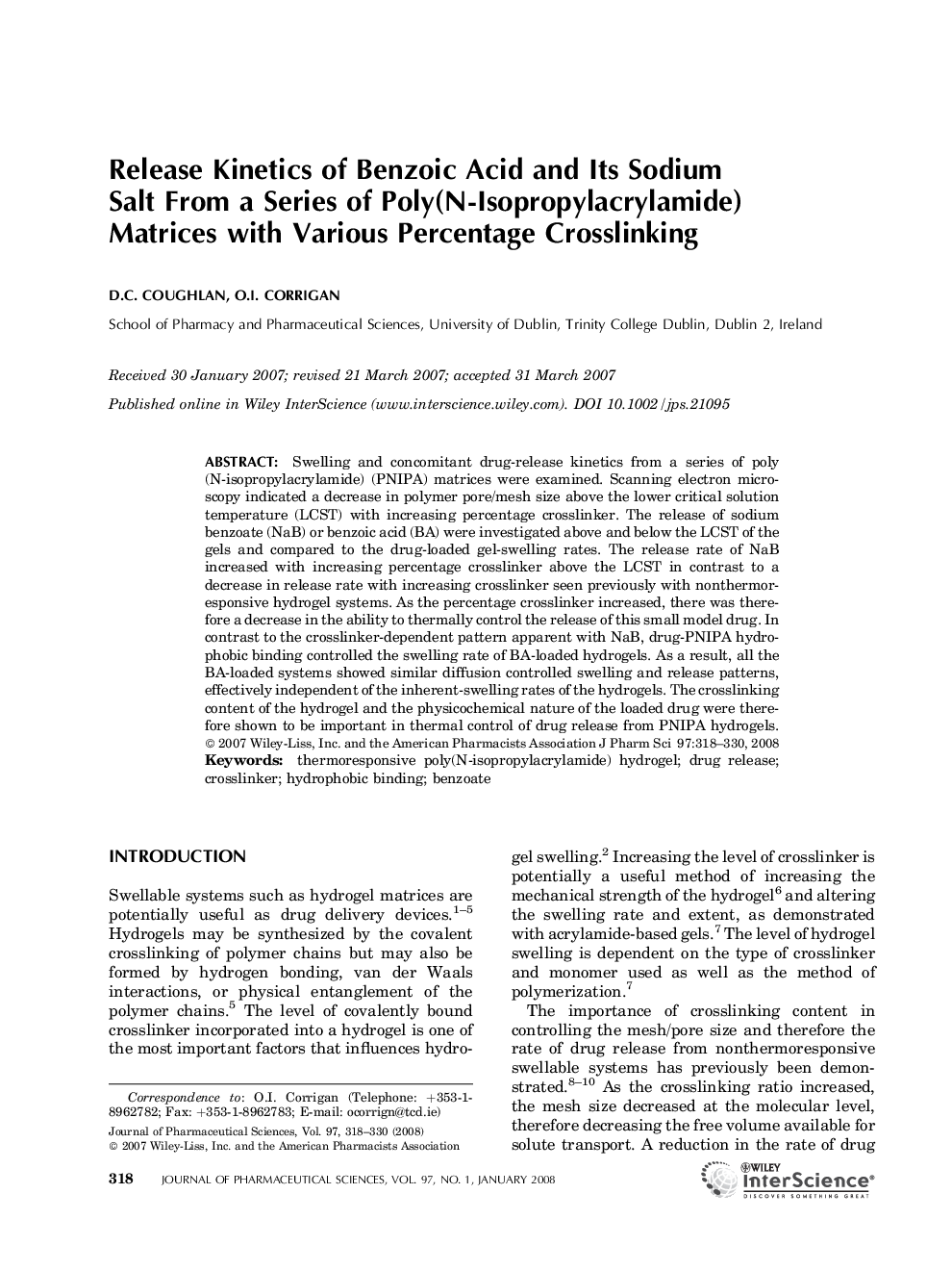| Article ID | Journal | Published Year | Pages | File Type |
|---|---|---|---|---|
| 2487598 | Journal of Pharmaceutical Sciences | 2008 | 13 Pages |
ABSTRACTSwelling and concomitant drug‐release kinetics from a series of poly(N‐isopropylacrylamide) (PNIPA) matrices were examined. Scanning electron microscopy indicated a decrease in polymer pore/mesh size above the lower critical solution temperature (LCST) with increasing percentage crosslinker. The release of sodium benzoate (NaB) or benzoic acid (BA) were investigated above and below the LCST of the gels and compared to the drug‐loaded gel‐swelling rates. The release rate of NaB increased with increasing percentage crosslinker above the LCST in contrast to a decrease in release rate with increasing crosslinker seen previously with nonthermoresponsive hydrogel systems. As the percentage crosslinker increased, there was therefore a decrease in the ability to thermally control the release of this small model drug. In contrast to the crosslinker‐dependent pattern apparent with NaB, drug‐PNIPA hydrophobic binding controlled the swelling rate of BA‐loaded hydrogels. As a result, all the BA‐loaded systems showed similar diffusion controlled swelling and release patterns, effectively independent of the inherent‐swelling rates of the hydrogels. The crosslinking content of the hydrogel and the physicochemical nature of the loaded drug were therefore shown to be important in thermal control of drug release from PNIPA hydrogels. © 2007 Wiley‐Liss, Inc. and the American Pharmacists Association J Pharm Sci 97:318–330, 2008
